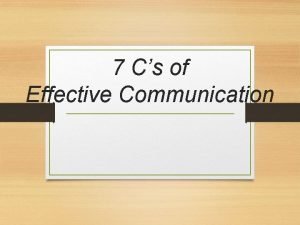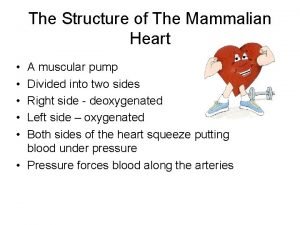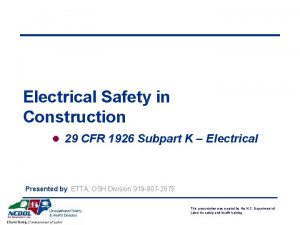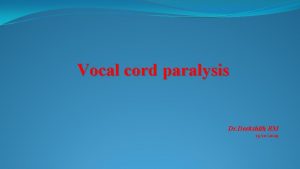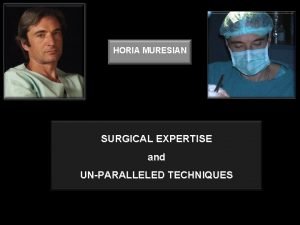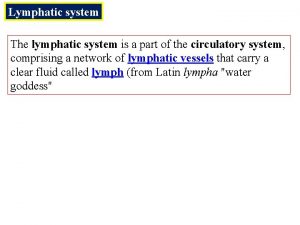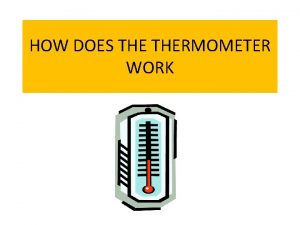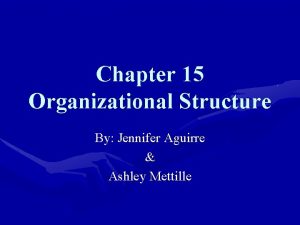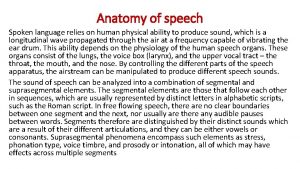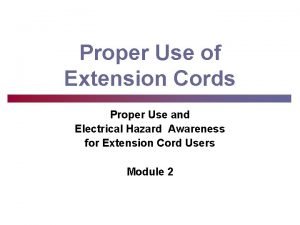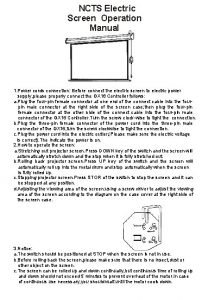Why its important Human communication relies on cords







































- Slides: 39


Why it’s important: • Human communication relies on cords vibrating in throats to send waves through gas, liquids, and solids that end up as electrical impulses in listeners’ brains.

State Standards Addressed Waves have characteristic properties that do not depend on the type of wave. As a basis for understanding this concept: • Students know waves carry energy from one place to another. • Students know how to identify transverse and longitudinal waves in mechanical media, such as springs and ropes, and on the earth (seismic waves). • Students know how to solve problems involving wavelength, frequency, and wave speed. • Students know sound is a longitudinal wave whose speed depends on the properties of the medium in which it propagates. • Students know radio waves, light, and X-rays are different wavelength bands in the spectrum of electromagnetic waves whose speed in a vacuum is approximately 3× 108 m/s (186, 000 miles/second). • Students know how to identify the characteristic properties of waves: interference (beats), diffraction, refraction, Doppler effect, and polarization.

Chapter 26: Sound I. The Origin of Sound (26. 1) A. All sound is produced by vibrations in an object 1. Vibrating strings, reed, vocal chords

2. In each case, original vibration stimulates the vibration of something larger or more massive a. E. g. Sounding board of a stringed instrument, air column within reed or wind instrument, air in the throat and mouth of singer b. Then vibrating material sends disturbance through a surrounding medium (usually the air)

3. Under ordinary conditions, frequency of vibrating source equals the frequency of sound waves produced.

B. Frequency of sound wave called pitch 1. Young person hears pitches from 20 to 20, 000 hertz. 2. As we get older hearing range shrinks

3. Sound waves below 20 hertz called infrasonic This frequency range is utilized by seismographs for monitoring earthquakes

4. Sound waves above 20, 000 hertz called ultrasonic 5. Cannot hear ultrasonic or infrasonic sound waves

II. Sound in Air (26. 2) A. Vibration creates pulse in air 1. travels out in all directions 2. Energy moves like compression wave in spring

3. Pulse of compressed air is called a compression. 4. Areas of lower-pressure air in between compressions called rarefaction (rarefied regions)

B. For all waves, it is not the medium that travels, but a pulse that travels.

III. Media that Transmit Sound (26. 3) A. Most sounds you hear are transmitted through air B. Solids and liquids are generally good conductors of sound 1. In general sound transmitted faster in liquids than gasses 2. Faster still in solids

C. Sound cannot travel in a vacuum 1. Transmission of sound requires a medium 2. There may be a vibration, but without medium, no sound

IV. Speed of Sound (26. 4) A. Speed of sound in dry air at 0°C is about 330 m/s (or about 1200 kilometers per hour)

1. Water vapor in air increases speed slightly 2. Increased temperature increases speed (For each degree increase in air temperature, the speed increases by 0. 60 m/s) 3. Speed at room temperature of about 20°C is 340 m/s


B. Speed of sound in a material depends on its elasticity not its density 1. Elasticity is ability of material to change shape in response to an applied force, and then resume its initial shape. Once distortion is removed (steel is elastic, putty is inelastic)

2. Sound travels 15 times faster in steel than air, 4 times faster in water

2. Sound travels 15 times faster in steel than air, 4 times faster in water

V. Loudness (26. 5) A. Intensity of a sound waves is proportional to square ofamplitude of a sound wave 1. An objective measurement 2. Use oscilloscope to measure

B. Loudness is a physiological sensation sensed in the brain 1. Is a subjective measurement, but related to sound intensity 2. Loudness varies as the logarithm of intensity (powers of ten

C. Intensity measured in decibels (d. B) 1. 0 d. B threshold of hearing for normal ear 2. Increase of 10 d. B is increase by factor of ten (20 d. B is 100 times more intense than 0 d. B)

VI. Forced Vibration (26. 6) A. Forced vibration- like the soundboard on a guitar. Is forced to vibrate by vibrations of strings B. Increases the loudness. Important for all stringed musical instruments

VII. Natural Frequency (26. 7) A. Every object composed of an elastic material will vibrate at its own special set of frequencies when disturbed, which together form its special sound. Natural frequency-unique to each object

B. natural frequency is one at which minimum energy is required to produce forced vibrations and frequency that requires the least energy to continue vibration

VIII. Resonance (26. 8) A. resonance- increase in amplitude when frequency of forced vibration matches the objects natural frequency. 1. resonance means to “resound” of “sound again” 2. requires force to pull it back to starting position and enough energy to keep it vibrating

B. Resonance not restricted to wave motion 1. Occurs whenever successive impulses are applied to vibrating object in rhythm with its natural frequency 2. Example- Tacoma Narrows Bridge collapse


IX. Interference (26. 9) A. Sound waves (like any waves) can be made to interfere 1. Crest overlaps crest of another wave (constructive interference) = increase in amplitude

2. Crests overlaps troughs of another wave (destructive interference) = decrease in amplitude

B. Interference affects loudness 1. Waves arrive in phase then waves add 2. Waves arrive out of phase then destructive

X. Beats (26. 10) A. Interesting case of interference 1. Occurs when tones of slightly different frequency are sounded together. 2. Fluctuation of loudness of combined sounds is heard (sound is loud, then faint, then loud, then faint, and so on) 3. Called beats

B. Beats can occur in any kind of waves 1. Used to tune musical instruments 2. When frequencies the same the beats disappear


Detection of Pressure Waves The human ear Sensitive to both frequency, amplitude, and different qualities of sound (dissonance and consonance) dissonance- an unpleasant set of pitches consonance- pleasant combination of pitches

Human ear collects pressure waves and converts them to electrical impulses Sound waves enter ear and cause vibrations of the tympanic membrane Tiny bones transfer vibrations to fluid in cochlea. Tiny hairs in cochlea pick up certain frequencies out of the fluid vibration Hairs stimulate nerve cells, sending impulse to brain - producing sensation of sound


 Why why why why
Why why why why Zero based forecasting
Zero based forecasting Modifiers of human acts reflection
Modifiers of human acts reflection Importance of human resource managment
Importance of human resource managment Why is communication important in the workplace
Why is communication important in the workplace Definition of completeness in communication
Definition of completeness in communication Why is verbal communication important
Why is verbal communication important Best buddies graduation cords
Best buddies graduation cords Best buddies graduation cords
Best buddies graduation cords Paramedian vocal cords
Paramedian vocal cords Permanently damaged vocal cords
Permanently damaged vocal cords Blood pressure si unit
Blood pressure si unit True vocal folds and false vocal folds
True vocal folds and false vocal folds Ncpa graduation cords
Ncpa graduation cords National technical honor society graduation cords
National technical honor society graduation cords Lausd graduation cords
Lausd graduation cords 29 cfr 1926. 404(f)(6)
29 cfr 1926. 404(f)(6) Kdp graduation cords
Kdp graduation cords Vocal cord position
Vocal cord position Beahr triangle
Beahr triangle Tendinous cords
Tendinous cords Subcutaneous nodules
Subcutaneous nodules Tendinous cords
Tendinous cords National english honor society cords
National english honor society cords Horia muresian
Horia muresian Cords
Cords Tyre cords
Tyre cords High school cords meaning
High school cords meaning Medullary cords
Medullary cords Osha 1910 gfci requirements
Osha 1910 gfci requirements Do birds have umbilical cords
Do birds have umbilical cords The marxist literary criticism is inspired by carl jung
The marxist literary criticism is inspired by carl jung How does a thermometer work
How does a thermometer work An economic system that relies on habit custom or ritual
An economic system that relies on habit custom or ritual Organic structure characteristics
Organic structure characteristics Recovery equipment that relies upon the compressor
Recovery equipment that relies upon the compressor Don't ask why why why
Don't ask why why why Example of a news story
Example of a news story Inverted pyramid in news writing
Inverted pyramid in news writing Least important to most important
Least important to most important





